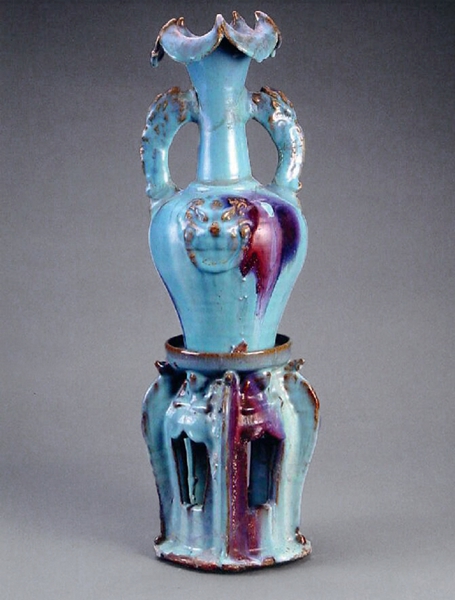The Dazzling Jun Porcelain
China Today ,January 15, 2018 Adjust font size:

Sky-blue-glazed high-based vase with animal mask design, Yuan Dynasty:
Collected by the Capital Museum, this Jun porcelain vase was unearthed in Beijing in the 1960s. With a flower-shaped opening and ferocious beasts decorating the two side of its belly, the vase sits on an elaborately carved pedestal, conveying the auspicious message of happiness, good fortune, affluence, and peace.
Despite his artistic talent, Emperor Huizong failed in governing the country. When the art of making Jun porcelain reached its peak in the Song Dynasty, Jur-chen troops marched into the Song capital Bianjing in a massive attack and captured Emperor Huizong. It was at this point the royal kilns of Jun porcelain stopped running.
In the 1950s, senior experts in Yuzhou City, after repeated experiments, finally reproduced Jun porcelain. In the new century, the Jun porcelain technique has developed further and seen new breakthroughs. The double-fire-barrier-bed kiln and firewood firing technique have both been recovered.
Encouraged and guided by the government, the art of making Jun porcelain has experienced huge momentum and seen an unprecedented boom. Artisans, by combining traditional techniques with modern technology, have produced a number of contemporary Jun porcelain master works. Jun porcelain wares have also become valuable state gifts for foreign dignitaries.
Today, existing Jun porcelain antiques are mostly items of royal collections of Yuan (1271-1368) and Qing (1644-1911) dynasties. It’s really rare to see the Song works. The followings are three representative Jun porcelain items in museum collections:
BAI DI is a course planner on ancient porcelains with the Ancient Porcelain Courtyard Museum.